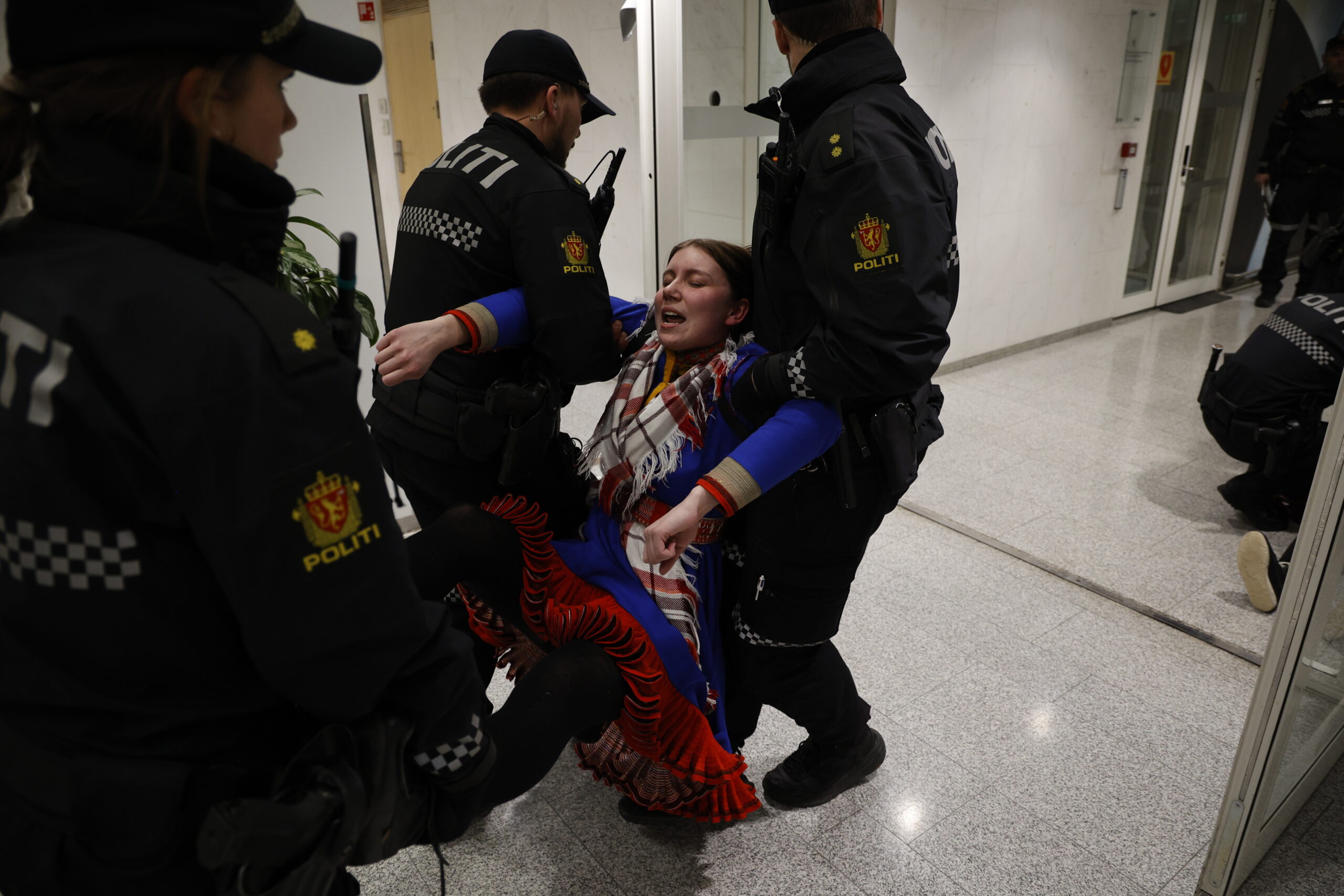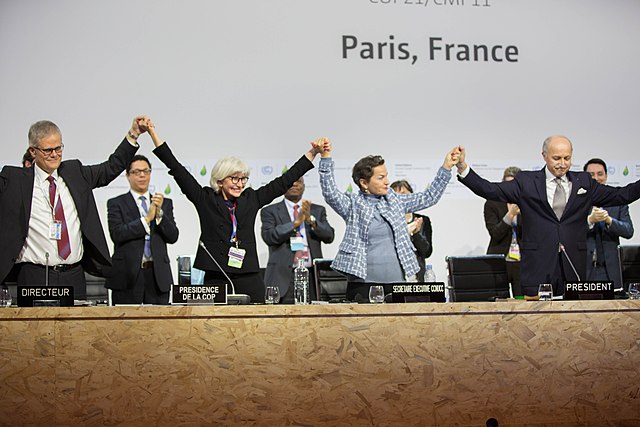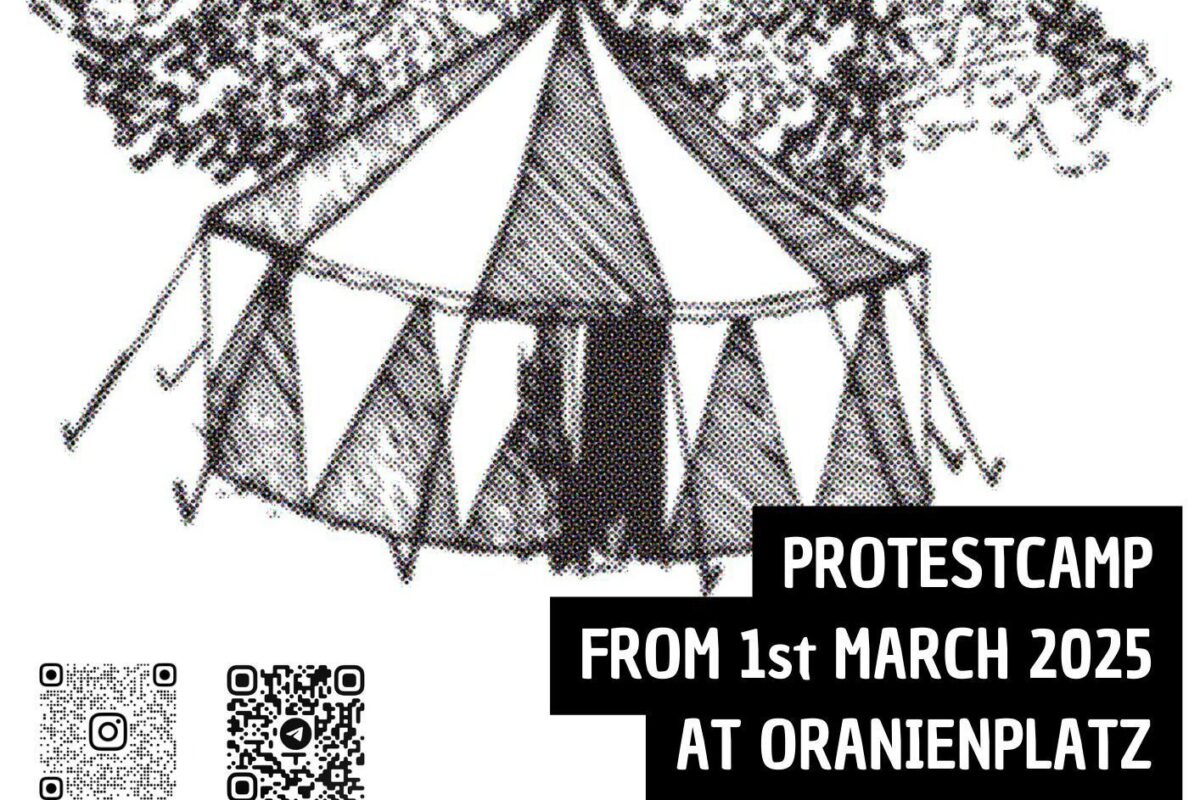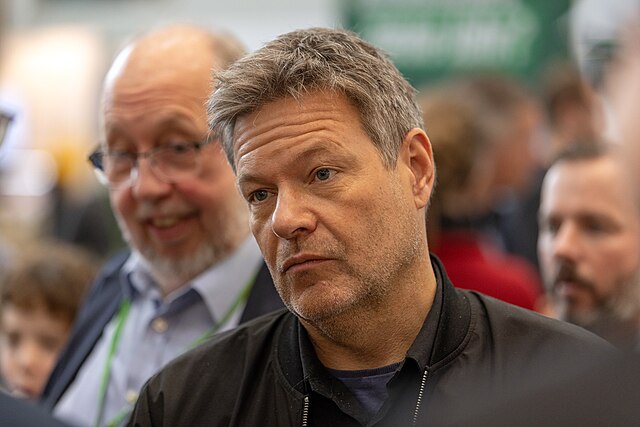On October 11th 2021, the Norwegian Supreme Court unanimously declared the concessions for the wind turbines at Storheia and Roan are invalid; and violate South Sámi rights to practice traditional culture and livelihoods at the Fosen peninsula in central Norway. On paper, the International Labor Organization’s Indigenous and Tribal Peoples Convention number 169 (ILO 169) and the International Covenant on Civil and Political Rights (SP 27) in Norwegian law protected indigenous human rights.
But despite this, 151 wind turbines were erected in winter pastures used by the Fovsen Njaarke Sijte reindeer herding district. The district consists of two groups, with six families in total. They have already been struggling against the wind turbines for almost 20 years. The 2021 verdict was a historic recognition of how crucial the pasturelands at Fosen are for protecting the herders’ human rights.
In October 2022, supporters of the Fosen reindeer herders marked the one year anniversary of the verdict in front of the Norwegian parliament. Five hundred days after the verdict, young Sámi activists took action to show that they are tired of waiting for the government to stop the human rights violation at Fosen. Sixteen young activists walked calmly into the lobby of the Ministry of Petroleum and Energy, refusing to leave until the government listened to their demands. For more than 24 hours the activists were refused food into the building, and both journalists and supporters were banned from entering. After four days, the activists were woken up and carried out by police during the night, while supporters stood chanting outside the ministry building. Only a few hours later, activists successfully blocked the entries of several ministries.
Hundreds of activists from all over Norway, and abroad, have joined the demonstrations and civil disobedience actions in central Oslo. The Swedish climate activist Greta Thunberg has for several days been one of them. The activists’ goal is to shut down the Norwegian state, ministry by ministry. One week into the demonstrations, activists have blocked the entry to 10 out of 15 ministries.
The civil disobedience actions have led to a crisis for the government. Photos of Norwegian police officers detaining young Sámi activists have put pressure on the government. Many of the activists wear their gáktis – traditional dress – inside out. This is a traditional Sámi sign of protest.
It is a stark reminder of Norway’s colonial wrongs against the Sámi people. Sámi people were for decades subject to the assimilation politics of the Norwegianization period. In this many Sámi children were put in boarding schools, refused to be able to speak their language, and isolated from their families for long periods. The result is that many Sámi families stopped using their languages and hid their gáktis. Today, many young Sámi are reclaiming identity and language, to proudly show their Sámi heritage.
On behalf of the Norwegian government Terje Aasland, minister for Petroleum and Energy, apologized this Thursday to the Fosen reindeer herding districts. Minister Aasland admitted that the construction of wind turbines on reindeer pastures are a “human rights violation”. This formal apology, coming after 507 days of inaction, was given reluctantly. But Aasland still maintains that they will find a solution that allows wind power production in the area. Critics are asking why it took four days of occupying Aasland’s ministry, with crowds of hundreds of Sámi activists in the streets of Oslo and one week of daily civil disobedience actions – before the government apologized. Until the protests were scaled up, Aasland maintained that the concessions for the wind turbines were in fact still valid, despite the 2021 verdict.
The Fosen conflict and demonstrations are about much more than a Supreme court verdict. For the Sámi activists, this moment is a chance to bring public attention to the concept of green colonialism in Sápmi. Today, wind power, mining and other industries on Sámi land are legitimised as climate mitigation. Former Sámi Parliament president Aili Keskitalo characterizes these developments as “the paradox of green colonialism. When colonialism has dressed up in nice, green refinery, and we are told that we have to give up our territories and our livelihoods to save the world because of climate change” (The Arctic Circle 2020).
The struggle against green colonialism stretches from Fosen, Øyfjellet and Repparfjord on the Norwegian side of Sápmi – to the struggle against green colonialism in Kiruna and Gállok on the Swedish side. Activists are raising awareness to how indigenous human rights are put aside to make space for “green” industries. The Fosen reindeer herders, like reindeer herders all over Sápmi, are put in an impossible position. Namely struggling against “green” developments and industries in order to protect their livelihoods. Sámi reindeer herding has taken care of the natures and landscapes they depend on for centuries. Paradoxically, this sustainable way of life is pressured by developments in the green transition, taking piece by piece of indigenous land.
Whatever the final outcome, the Fosen conflict is a painful reminder of why there is a lack of trust between Sámi people and Norwegian authorities. If a Supreme court verdict is not enough to respect indigenous human rights and protest Sámi livelihoods, what will it take?
The demonstrations in and around the ministry for Petroleum and Energy have gathered support from a range of political parties, civil society organizations, supporters walking by with food and blankets, artists and a local church – all of whom raise spirits by making sure the activists are warm, hydrated and fed. The solidarity, both from all over Norway and abroad, is fueling the protests until their demands are met. Sámi human rights are not optional in the green transition.
Baaj Vaeride Årrodh – Let the mountains live!




